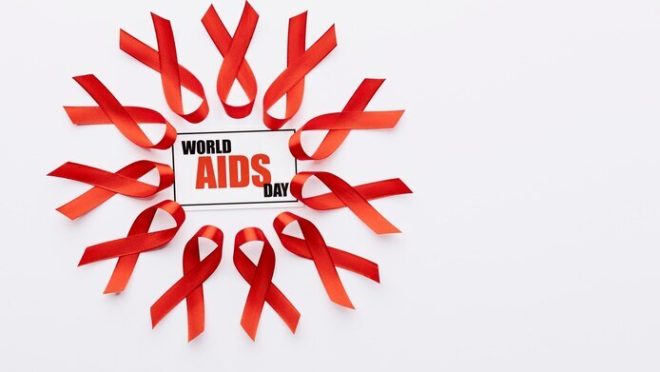World AIDS day 2024: How the red ribbon became a global symbol for AIDS
World AIDS day 2024: How the red ribbon became a global symbol for AIDS

Today, the red ribbon is globally recognised as the symbol of support in the fight against AIDS. But how did this folded little piece of six inches of ribbon become an international sign?
It was almost 65 years since the world’s first AIDS case was documented in Kinshasa in what was then the Belgian Congo that the red ribbon had come to be associated as a symbol of support for this condition. Celebrities, activists and the common man across the world wear the ribbon to show their solidarity for those afflicted by the disease.
But how did the red ribbon come to serve this purpose — how did it become one of the world’s most recognizable symbols, and what, exactly, does it mean?, reports Firstpost.
The AIDS crisis
In the mid-’80s, the world was fighting a health crisis that nobody wished to discuss; it was AIDS. For many then, it was known as the ‘gay disease’, since gay men were one of the primary groups afflicted. Many newspapers carried reports of gay men being admitted to New York hospitals with severely compromised immune systems.
Such was the situation that on May 25, 1983, the New York Times published its first front-page article on AIDS. The report had the US government’s top health official saying that the investigation of AIDS had become the “No. 1 priority” of the United States Public Health Service.
It was at this time of crisis that a group of artists, under the banner of Visual AIDS, eventually expanded to become an international movement that utilized art as a means of creating awareness about the disease.
Birth of the red ribbon
Until today, the Red Ribbon has become an international symbol of AIDS awareness, originating in 1991 when a group of 12 artists in New York formed it for the dual purpose of getting people talking and as a badge of support for those fighting the disease and their carers. The inspiration was yellow ribbons worn to show support for U.S. families of the Gulf War. Red was selected because of its boldness and association with passion and love, omitting colors associated with the gay community to make very clear that AIDS was not exclusively a gay disease. Being simple in design, instruction was given to cut the red ribbon and fold it in an inverted “V” shape.
Red ribbon gains fame
The Red Ribbon finally became well known when, during the 1991 Tony Awards, actor Jeremy Irons became the first celebrity to wear it publicly, along with other attendees. No one explained what it meant on air-reportedly due to network threats to cut to commercial-but the mystery created great media interest as speculation about its purpose mounted. It soon became an international symbol of AIDS awareness, appearing everywhere from the Emmys to the Oscars to the Grammys. Demand went through the roof, and Visual Aids teamed up with a charity to manufacture the ribbons. In 1992, the ribbon reached London, where it was handed out at a Wembley Stadium AIDS benefit concert for Freddie Mercury.
Simple and free
The success of the Red Ribbon lies in its simplicity, making it easy to create, visually appealing, and universally accessible. Its creators deliberately avoided trademarking it, believing that unrestricted use would allow the symbol to spread widely. Tom Sokolowski explained that while they initially included explanatory texts with the ribbons, they quickly realized these were unnecessary.
The decision not to copyright the ribbon reflected its intended spirit of openness, making the ribbon free for all. This approach allowed the symbol to “go viral” in a metaphorical sense, much like HIV itself. The ribbon’s universality paved the way for other awareness ribbons – for example, the pink ribbon for breast cancer. Another nod to the Red Ribbon impact came in the form of a U.S. Postal Service stamp in 1993.


